Looking for a way to easily create an amazing landing page that converts? To explore this question, we laid out nine critical elements to make a landing page successful.
Keep reading to learn how to build a landing page that converts.
Let’s get started.
9 Key Elements Every Landing Page that Converts Needs to Have
There are nine key elements you need to have on every single landing page that you create.
1. A Headline They Care About
If you are building a landing page and do not include a headline, you are missing out. The headline is the first message that people read.
Now, a headline is not a product that you are selling.
A headline is an enticing string of text originally found on an ad that is intended to attract a specific audience, hopefully, enough to keep reading and eventually take some sort of action. The key word here is enticing.
They read it and – boom – they are ready to read more! You might say something like “Stop paying for landing page software.” They then click or navigate to your intended location (the landing page) and the headline should be “Stop paying for landing page software.”
When people read the same text in the headline on the landing page, people make the connection and know that they are in the right place.
It is the eye-catching or reinforced message that you used to bring people from various locations to the landing page.
Seattle’s iconic Space Needle recently underwent a remodel to remove structural objects that got in the way of visitors’ Instagram shots. Now, tourists looking to buy tickets are greeted by this headline that emphasizes the new look—and the amazing views that have always made the Space Needle a top attraction.
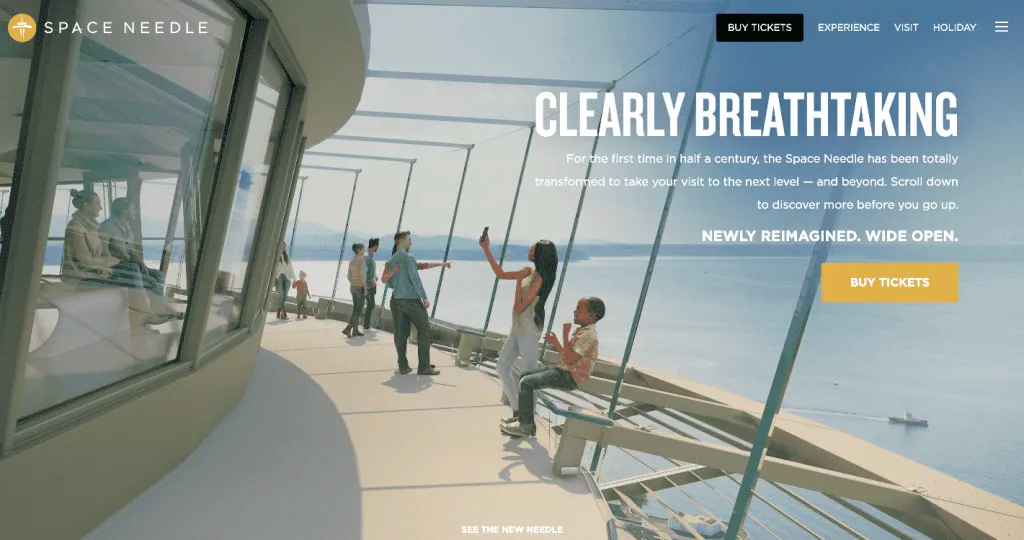
What holds people back from finally getting organized? Evernote, the note-taking and organization app, understands that it’s simply the fear of how hard the task will be. Their headline tackled that fear head-on. This is exactly the message that people trying to get organized will want to hear. It confirms that their goal will be met, and alleviates their biggest concern about getting it done.
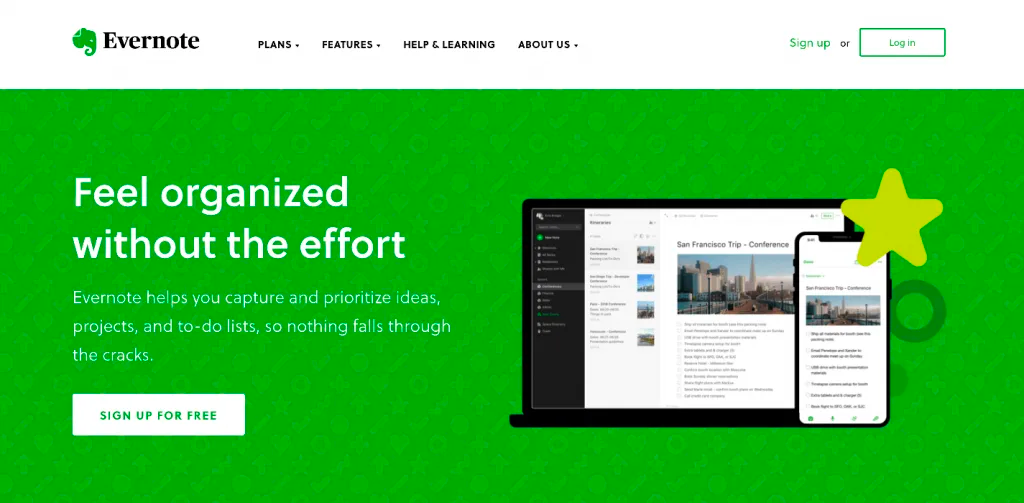
2. The Problem(s) They Have
Next, hit the audience with the problem you are solving for them. It doesn’t have to be one problem; it could be two or even three problems you are solving.
Now, many of you will jump to selling or talking about your solution (your product). If you haven’t qualified the problems you are trying to solve, you haven’t built the relationship yet to a place where you can present a solution.
First – articulate the problem.
We all know what bad project management does to a person. The popular project management platform Basecamp shows us, with this cheeky illustration of a panicked office worker. Anyone swamped under relentless demands by modern business life will immediately relate.
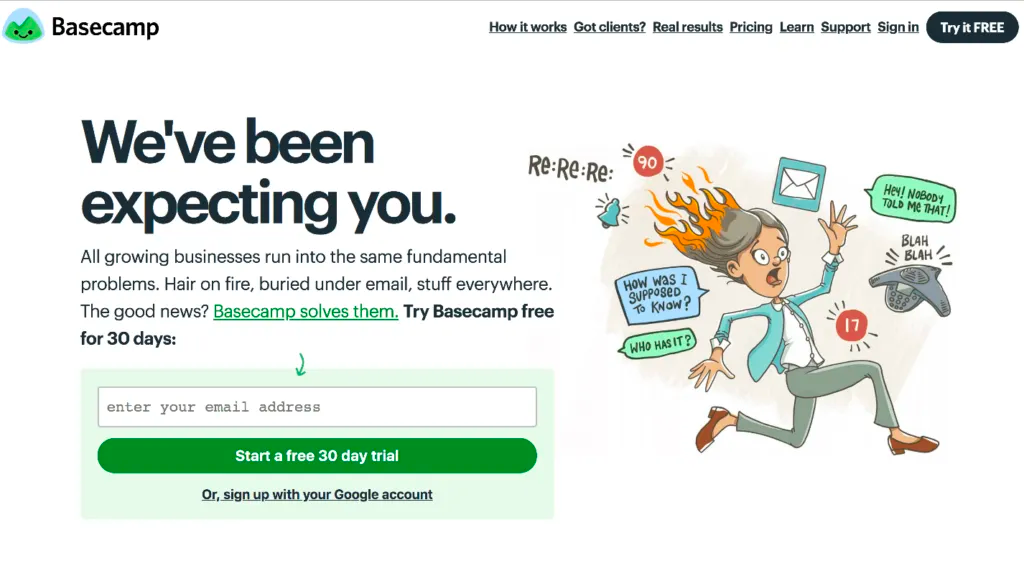
Nauto, a driver safety system, uses statistics to confirm to potential customers how big of a problem distracted driving is. You can imagine a fleet manager realizing that, based on these stats, the problem is actually much worse than they thought. And the statistics hit both the emotional and the practical sides of the brain by mentioning fatalities and overall cost.
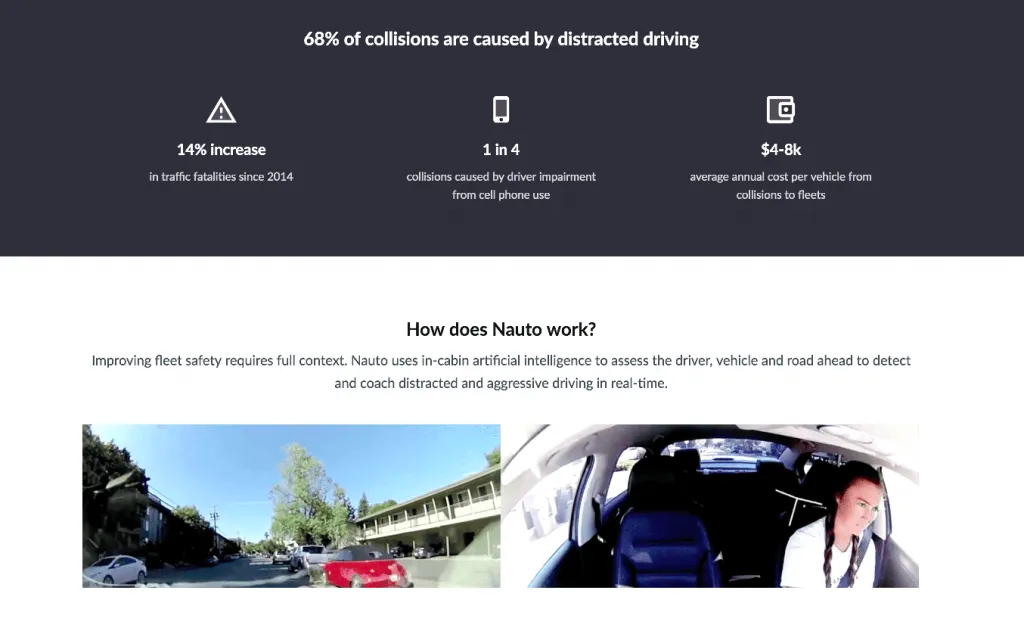
3. The Benefit(s) You Can Provide
This is where you can start talking about their pain points, which are the real reasons why they navigated to this page in the first place. First, talk about the pain, and then you can talk about the gain.
No pain, no gain right?
Barefoot Buttons specializes in a pretty niche product — customized buttons that get added on to guitar pedals and similar musical accessories to “increase comfort and accuracy”. But if you’re in their target audience and you’re fed up with your current effects pedals, they put their product front and center to show you what an alternative could look like. Then, they reiterate why you’ll love it with a short introductory sentence.
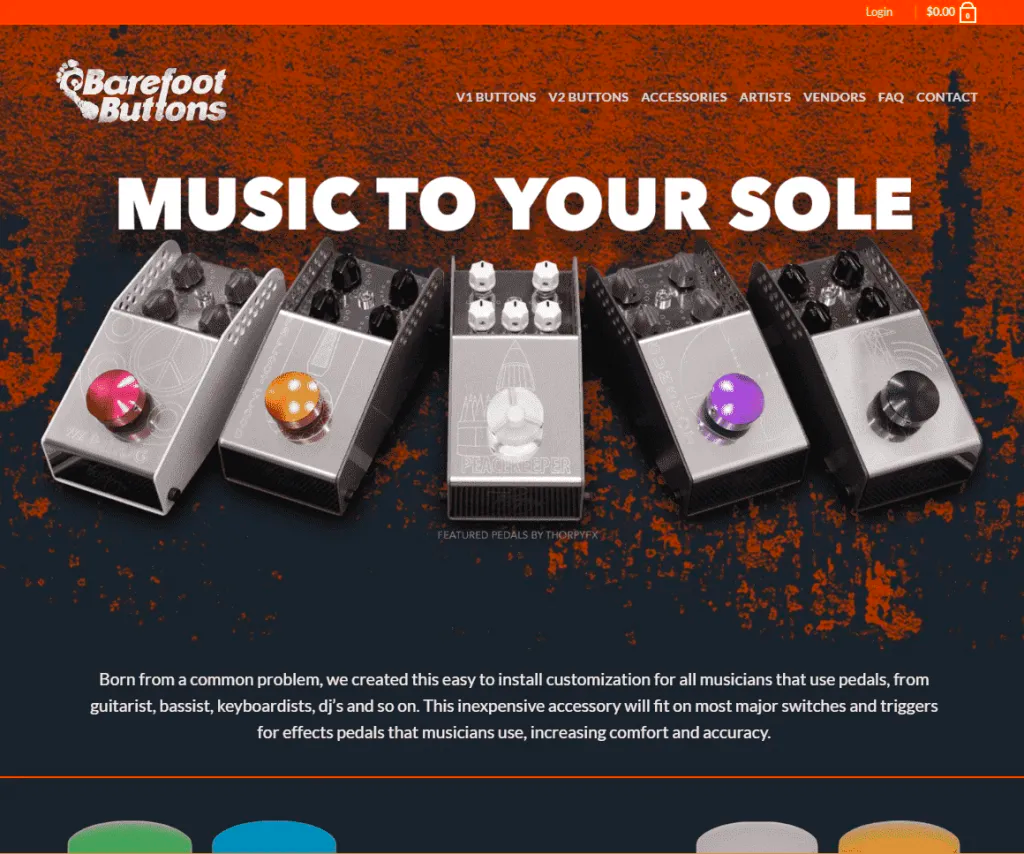
Aloompa provides technology for events professionals—think big gatherings like marathons and state fairs. Their homepage clearly defines the products that they offer—mobile app, web embeds, location intelligence, and live stream. A direct access point to the offerings of their business cuts out the guesswork for a customer base that’s typically working on tight deadlines.
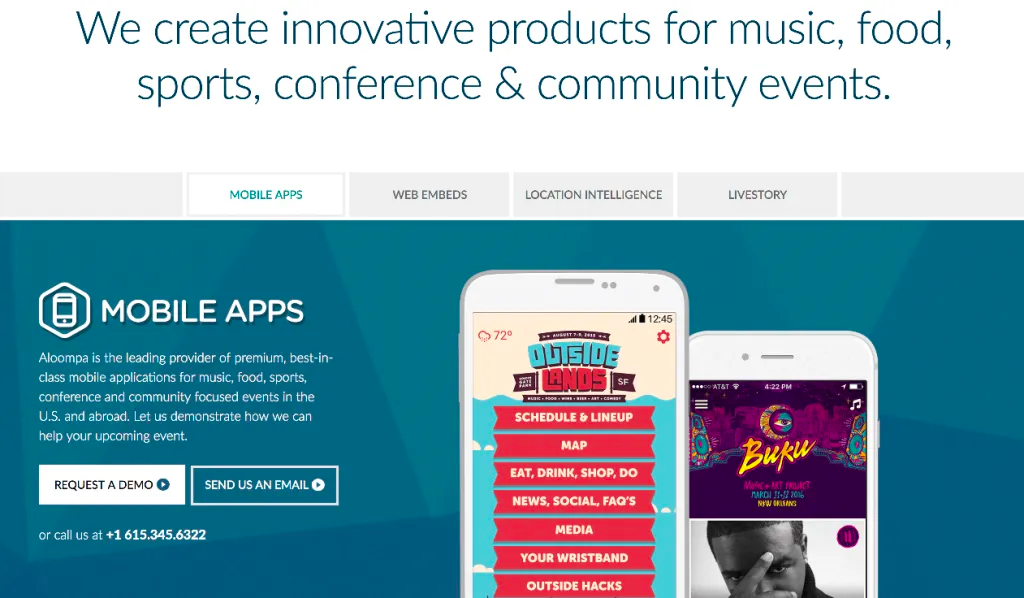
Next, show them a different route that they can begin to take… with your solution. It’s time to talk about your product(s).
4. The Solution You Have
Finally! Introduce them to the reason that you brought them to the landing page in the first place. Make sure you highlight exactly how the solution you are providing ties to the pain points you just mentioned.
The Hidden Grounds, a coffee bean retailer, does a good job of reminding people how disastrous it is to run out of coffee. Then, they connect that thought to the solution—their subscription.

The web automation solution Zapier sells is more of a tool than a product. The simple, direct message on their landing page explains very clearly what that tool can do. For their audience of busy, tech-savvy professionals, the direct approach is very effective.
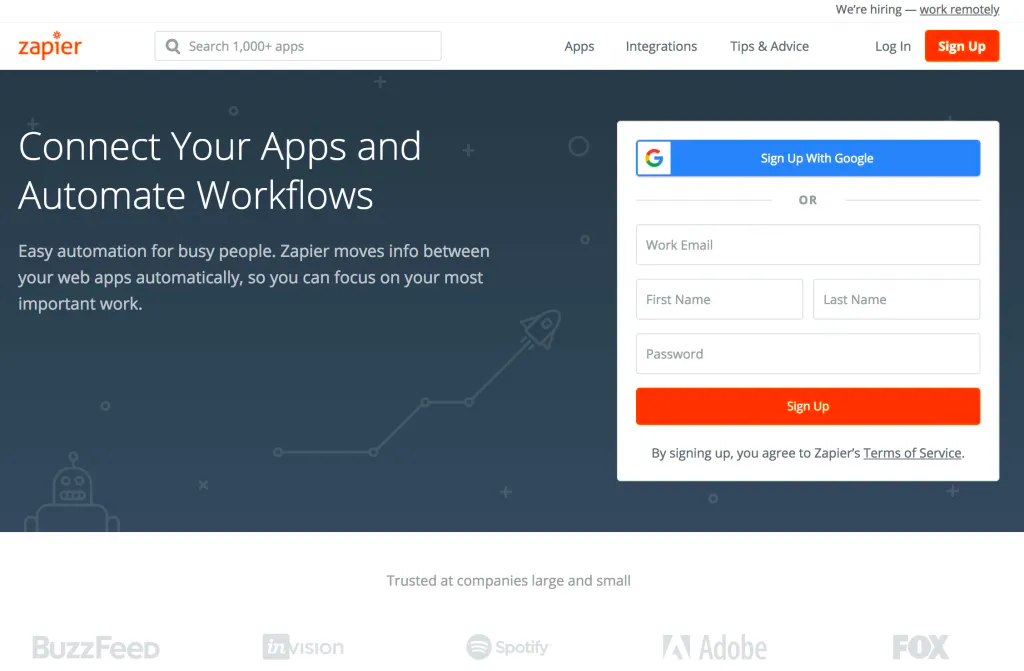
But leads aren’t going to just take your word for it. They need social proof that your solution works and works well.
5. Provide Social Proof
One of the most common forms of social proof is testimonials. Testimonials are highlights of why your product is amazing written by other people similar to your target audience.
With social proof, people plainly see, “Hey, listen to all of these other people say how awesome this product is.” Pull reviews from your site, or if you are listed on Amazon, you can pull from there. Find ways to illustrate to your audience that people just like them are in love with your product.
GameTextures.com sells digital design assets to video game designers so they can build new games faster. This case study highlights stunning customer designs and shows how they made them—with patterns sold by GameTextures.

You can always say a customer is happy but isn’t it better to show a customer who’s happy? Hubspot puts their ecstatic customers front and center on a case studies page that isn’t just academic—the page includes a very clear call to action.

Once you cover social proof, show the audience how you are credible.
6. Provide Credibility
When people are wondering whether you are credible, they will wonder, “Why should I trust you for this solution?”
If this same solution, or something very similar, is offered by ten different retailers or online stores, the potential customer will hesitate. They will wonder why they should choose your product instead of the others.
Give them clear and compelling reasons why you and your product stand out.
How do you get customers to trust you? By latching onto feelings of trust they already have. Hootsuite gives potential customers a powerful message by highlighting the big companies who use their product. Further down their homepage, they also note a recommendation from Forrester, a respected market research company.
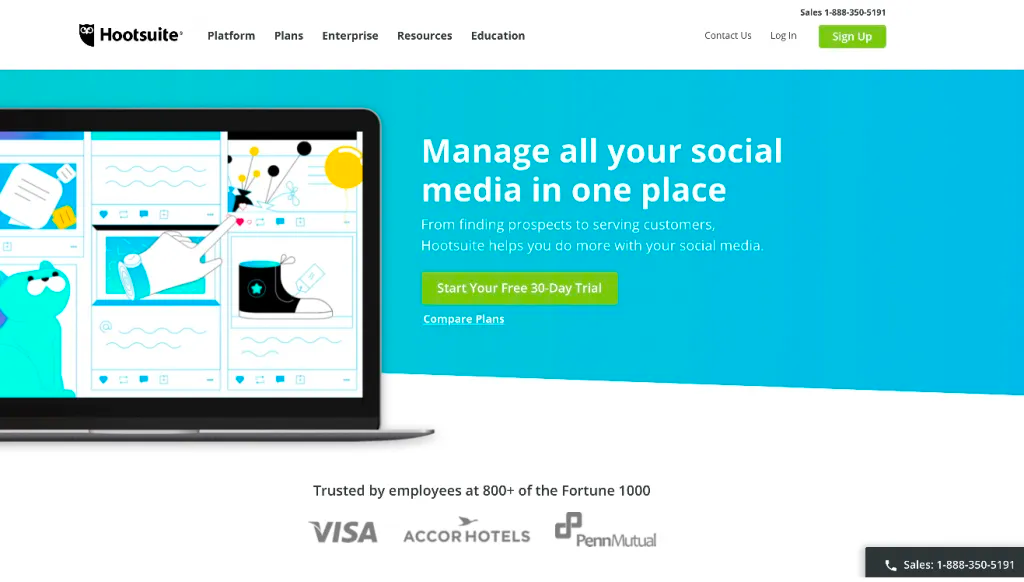
Magnatiles are a hot commodity for kids these days, and the company does a good job of reminding you on their homepage. Features like a store locator highlighting all of the stores near you that carry their products, and a call-out section for their featured stories in publications like Business Insider make it clear their toys are highly sought after.
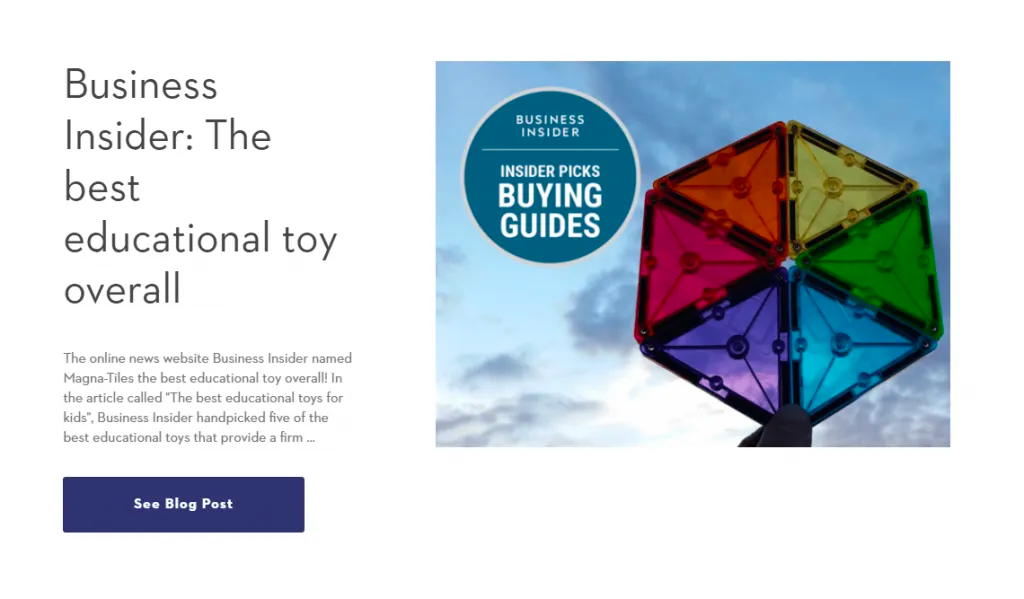
7. Pricing
Yes, hit them up-front with pricing. Don’t make the audience dig through your site to find the pricing for your product, because most likely they will instead navigate to another landing page for a competitor that has their information more clearly displayed.
Make it easy for them to eliminate all potential barriers to purchase so that they can be ready to purchase your product immediately.
If the product is expensive, hiding the pricing until the end of the transaction will only frustrate them. You want to be as helpful as possible.
If you have multiple options for pricing, make sure to list that on the landing page as well.
The popular email marketing platform Mailchimp lets you estimate the cost of their product based on the number of subscribers you have.

Bearded Colonel specializes in high-end shaving equipment, but they address pricing concerns right on their homepage tagline: “Top of the line razors. Delivered for a fair price.” This language is reiterated throughout the site, highlighted in the footer and in their features section on the homepage.
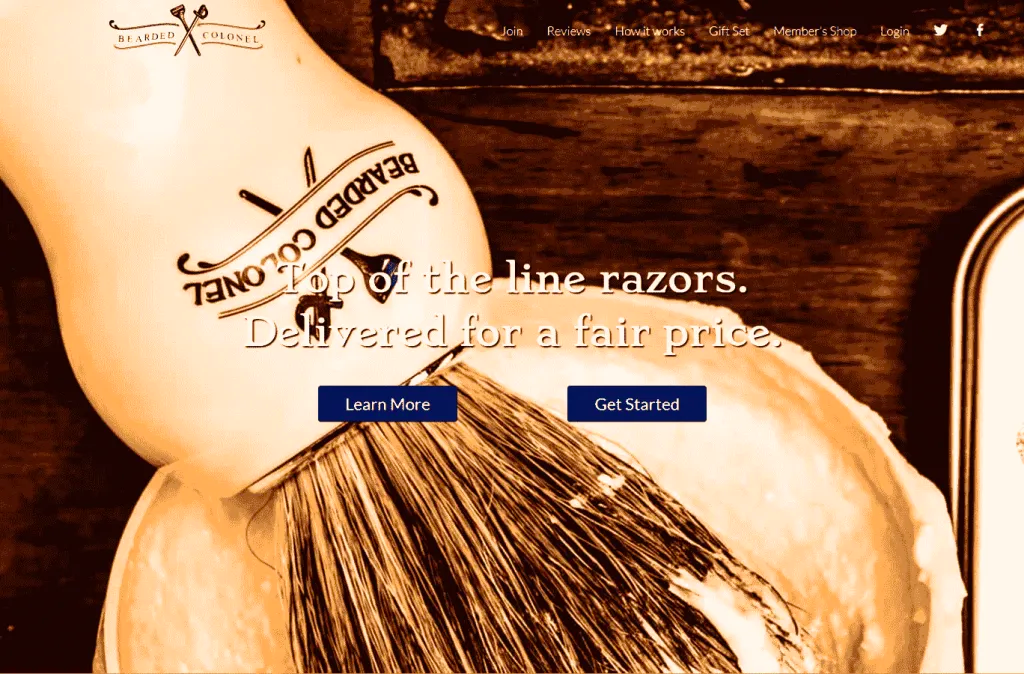
8. Call to Action (also known as a CTA)
The call to action is the specific behavior that you are driving the lead to take after reading the landing page.
Only include one call to action on the landing page for the best results.
Yes, it is tempting to try and sell more than one product, sell add-ons, or build your email list.
But it isn’t effective for landing pages to have more than one CTA.
When you are building your landing page, decide this up front. Let this CTA direct the content for your entire page, as this will also be the way you determine how well your landing page performs.
Include the call to action several places on the landing page, so that at any point during their journey on your page, they can decide to purchase without hesitation.
It’s tempting to click around Adoboloco’s site just to see all the beautiful hot sauce bottles. But the company makes their offer clear on the homepage.
“Build A Primo 3 Pack” pushes users towards ordering a three-pack of hot sauce bottles, where many might have just ordered one or two. For a product with moderate shipping weight and cost, this call to action likely pushes their average order value much higher than a call to action like “Shop Now” or “Find Your Bottle."
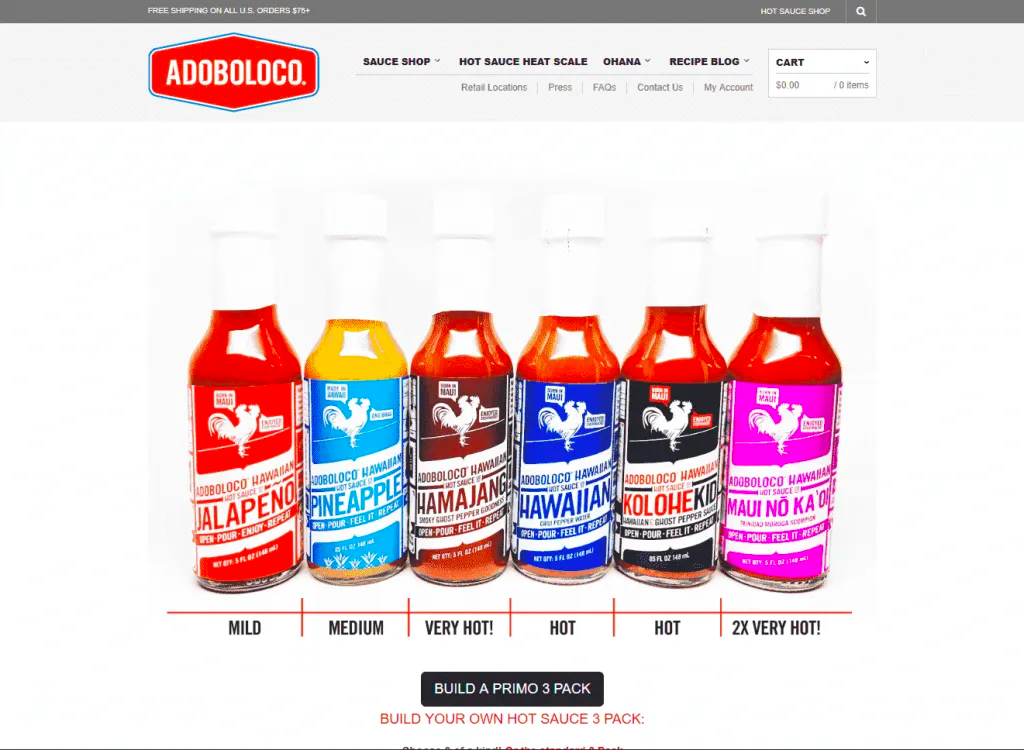
Winc, a wine subscription service, wants to build a relationship with customers rather than compel a one-time impulse buy. So their CTAs, while very bold, are light on the sales pitch. Instead, they draw you into an experience.
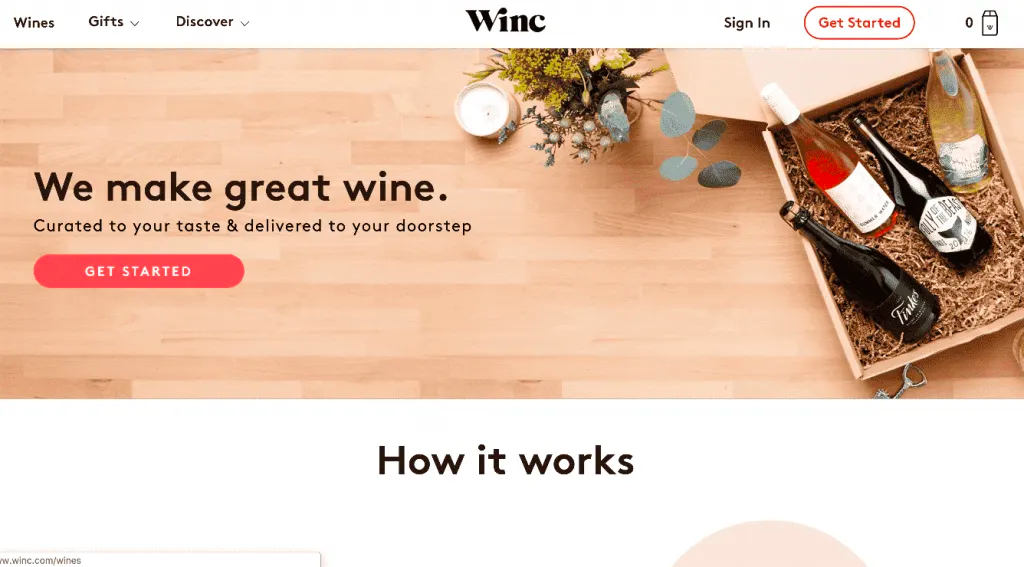
9. Include Objection Mitigators
Objection mitigators are the questions that the audience already has running through their head by the time that they have hit this point on the landing page. These are the primary reasons they may end up leaving the page without purchasing your solution or product.
You want to step into that conversation and address these up front so that they can make an informed decision without having to search elsewhere.
Talk to your sales team to find out what the top questions being asked are, and include them on your landing page. These may also be located on your FAQ page.
BetterBody Foods specializes in health food—their target customers care deeply about what’s going in their bodies. BetterBody makes sure to address those concerns clearly on their homepage, covering common food concerns like GMOs, Gluten, Dairy, Soy, and more through the rest of the page.
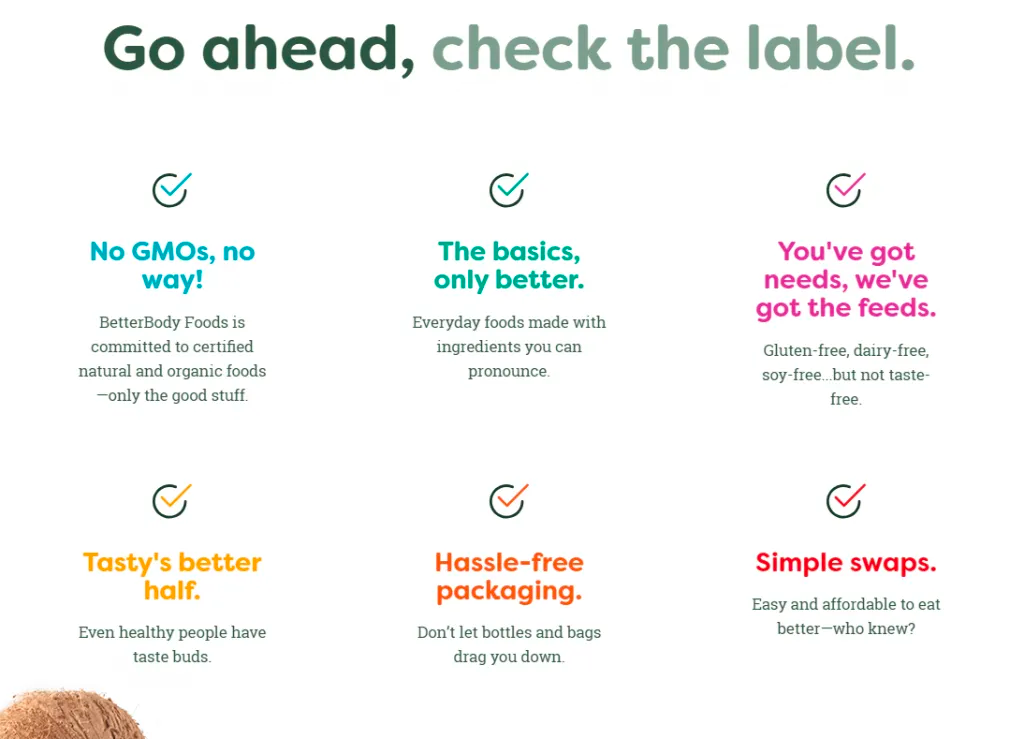
On their pricing page—typically fertile ground for conversions—the data platform MonsterInsights emphasizes their money-back guarantee. You’d figure anyone on a pricing page is sensitive to cost, and the guarantee helps overcome that objection. Other potential objections are addressed in the FAQs further down the page.

Building a Landing Page That Converts
As you build your next landing page, make sure you have all nine elements present to convert as many leads to sales as possible.
- A headline they care about
- The problem(s) they have
- The benefit(s) you can provide
- The solution(s) you have
- Social proof from a similar audience
- Provide credibility
- Pricing for your product(s)
- One CTA placed throughout the page
- Objection mitigators to close the sale
Ready to Take Your Site To the Next Level?
Our Managed WordPress Hosting solution provides automatic plugin and platform updates, image compression, and daily backups so you can focus on creating an amazing landing page that converts while your site performs beautifully.
Check out our plans to get started today.

